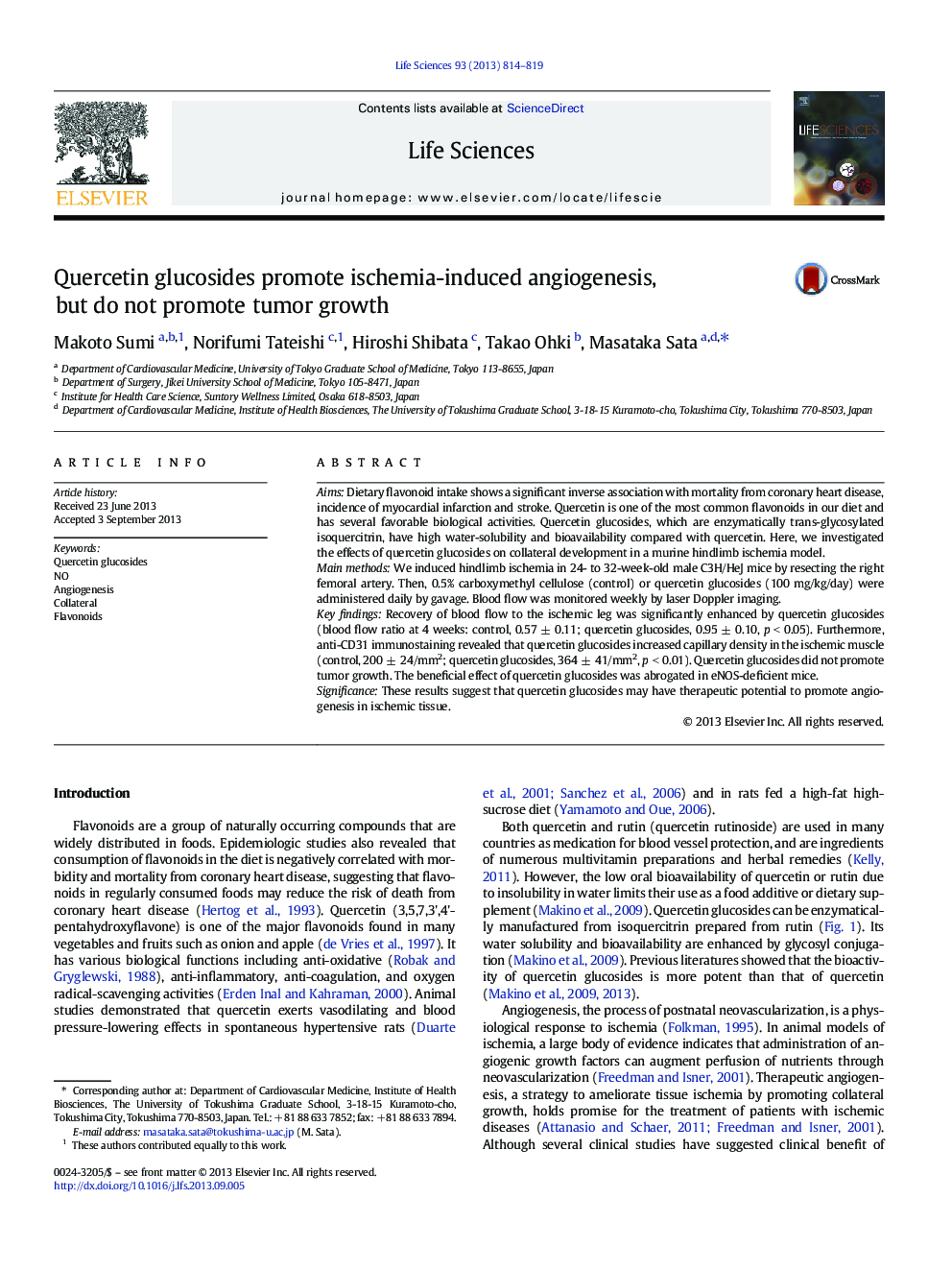| Article ID | Journal | Published Year | Pages | File Type |
|---|---|---|---|---|
| 2551501 | Life Sciences | 2013 | 6 Pages |
AimsDietary flavonoid intake shows a significant inverse association with mortality from coronary heart disease, incidence of myocardial infarction and stroke. Quercetin is one of the most common flavonoids in our diet and has several favorable biological activities. Quercetin glucosides, which are enzymatically trans-glycosylated isoquercitrin, have high water-solubility and bioavailability compared with quercetin. Here, we investigated the effects of quercetin glucosides on collateral development in a murine hindlimb ischemia model.Main methodsWe induced hindlimb ischemia in 24- to 32-week-old male C3H/HeJ mice by resecting the right femoral artery. Then, 0.5% carboxymethyl cellulose (control) or quercetin glucosides (100 mg/kg/day) were administered daily by gavage. Blood flow was monitored weekly by laser Doppler imaging.Key findingsRecovery of blood flow to the ischemic leg was significantly enhanced by quercetin glucosides (blood flow ratio at 4 weeks: control, 0.57 ± 0.11; quercetin glucosides, 0.95 ± 0.10, p < 0.05). Furthermore, anti-CD31 immunostaining revealed that quercetin glucosides increased capillary density in the ischemic muscle (control, 200 ± 24/mm2; quercetin glucosides, 364 ± 41/mm2, p < 0.01). Quercetin glucosides did not promote tumor growth. The beneficial effect of quercetin glucosides was abrogated in eNOS-deficient mice.SignificanceThese results suggest that quercetin glucosides may have therapeutic potential to promote angiogenesis in ischemic tissue.
